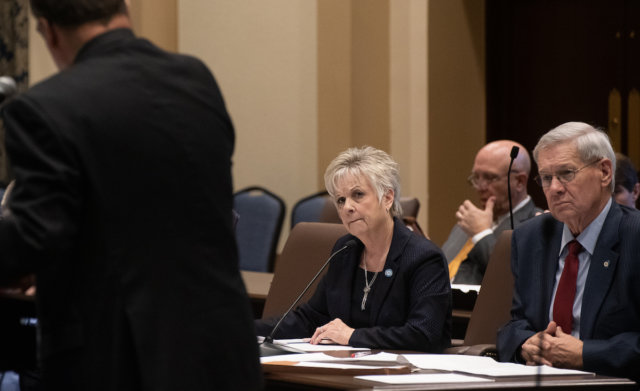

The Oklahoma House of Representatives advanced a compromise agreement on workers’ compensation issues Monday morning, sending a 187-page bill to the State Senate intended to address issues from the state’s 2013 system reforms.
“To me, it’s one of those unicorn bills where you get everybody who has a stake in it and they compromised and left with good public policy,” said House Judiciary Committee Chairman Chris Kannady (R-OKC). “That rarely happens with that many people at the table.”
Those people represented businesses, workers’ compensation attorneys, physicians, insurers, the Oklahoma Department of Labor, elements of the court system, Gov. Kevin Stitt’s office, both chambers of the Legislature and more, according to Kannady.
“The compromise reached in HB 2367 on workers’ compensation is vital because it respects injured workers and protects the landmark workers’ compensation reforms passed in 2013,” State Chamber of Oklahoma CEO Fred Morgan said Monday. “HB 2367 represents months of hard work and good faith negotiations with all three branches of government to facilitate a competitive workers’ compensation market in Oklahoma that encourages job creation and respects injured workers.”
Both Morgan and workers’ compensation claimant attorney Joe Biscone praised Kannady and Sen. Julie Daniels (R-Bartlesville) for working to balance the desires of competing interests.
“It’s a compromise by all parties concerned, so it turned out satisfactory,” Biscone said Monday. “We hammered it out.”
Biscone said business interests wanted fewer changes and that claimants attorneys wanted more, but he said “the compromise ended up where it was.”
“To me the most important thing was that the docs can still practice,” Biscone said. “They did not make those Official Disability Guidelines the mandatory guidelines for treating injured workers. Those are very restrictive. The chamber tried very hard to get that passed, but we thought that would not be good for the injured worker.”
Biscone said it’s important that benefit rates will rise slightly for those with temporary disabilities and for those with permanent disabilities. Kannady also called that a victory.
“I’m extremely pleased that we were able to bring all of these interested parties together and get something done,” Kannady said. “It shows you that government can work.”
Daniels: ‘It’s a very good compromise’
The compromise version of HB 2367 itself (embedded below) provides solvency for the Multiple Injury Trust Fund and extends the otherwise-expiring Court of Existing Claims, which hears cases filed before the new law took effect in 2014.
Biscone also touted a small tweak to statutory guidelines for adjudicating heart attack claims.
“The last heart attack statute they passed (in 2013) made no sense. So it cleaned it up to where it put stress back into the equation,” Biscone said. “So at least now there’s a chance to prove your case where, before, there was zero chance. Heart attacks are tough enough to prove anyway that they are job-related.”
Daniels praised the agreement for preserving “the existing reforms” that helped lower workers’ compensation insurance premiums in Oklahoma.
“In my opinion, most of the groups got more of what they wanted than what they didn’t,” Daniels said. “There really was a lot more agreement on the issues that needed to be resolved. I think all in all it’s a very good compromise, and I don’t think anybody walked out of the room unhappy.”
Labor Commissioner Leslie Osborn tells daughter’s workers’ comp story
During a February meeting of the House Judiciary Committee, Kannady called on Labor Commissioner Leslie Osborn to answer a couple of questions about the negotiations over HB 2367.
Speaking to a packed room, Osborn discussed her daughter’s experience with the new workers’ compensation commission that was established by the system overhaul Osborn carried when she was a House member.
“It was interesting to see it on that side of the perspective. You never expect your daughter who is in a white collar with a master’s degree to have that kind of injury, but she did,” Osborn said. “It took us three months to get an MRI. I could have paid for the MRI, but that would have kicked her out of the workers’ comp system.
“When she finally got in for the MRI — and they’d required her to go to a lot of physical therapy in the meantime — she had a disc over so far hitting in her spinal cord they said it was a miracle she had not become a quadriplegic from what had been required before they would pay for an MRI. That was not the intent of the Legislature. If somebody is injured on the job and it was not their fault and it was the safety conditions, you can be a compassionate legislator.”
At the February meeting, Osborn said she supported the multi-year effort to find a compromise to address issues with the new system that have been ruled unconstitutional.
“We have some of the worst payouts in the nation for people that lose a limb to whatever, and to go back a bit on the pendulum for people that are truly injured on the job is reasonable,” Osborn said.




















